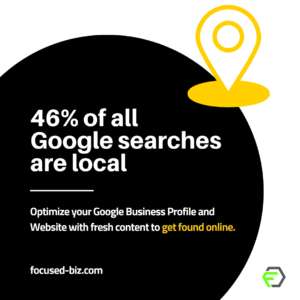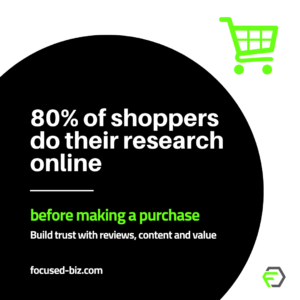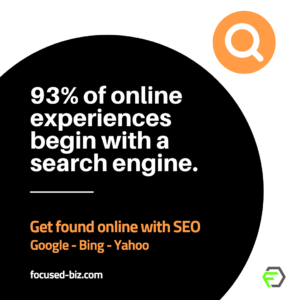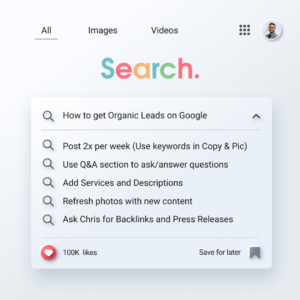Understanding the Basics of SEO
What is SEO?
SEO stands for Search Engine Optimization, which is the practice of improving a website’s visibility and ranking on search engine results pages. Boosting SEO Rankings can help businesses get more organic traffic and customers. When a user searches for a specific keyword or phrase, search engines like Google use complex algorithms to determine which websites are the most relevant and useful for that query. By optimizing your website for SEO, you can increase your chances of appearing higher in the search results, driving more organic traffic to your site.
The Importance of SEO
Having a solid understanding of SEO is crucial for any business or individual looking to maximize their online presence. With millions of websites competing for attention on the internet, it is essential to stand out from the crowd and make your website easily discoverable by search engines. By improving your website’s SEO, you can attract more targeted organic traffic, increase brand visibility, and ultimately achieve higher conversion rates.

Key Factors of SEO
There are various factors that influence SEO rankings, and understanding them is vital for successfully optimizing your website. Some key factors include:
1. Keywords: Keywords are the words and phrases that users enter into search engines when looking for information. Conducting thorough keyword research and strategically incorporating these keywords into your website’s content will help search engines understand the relevance of your site to specific search queries.
2. On-Page Optimization: On-page optimization refers to optimizing individual web pages to improve their visibility and relevancy. This includes optimizing title tags, meta descriptions, headings, and URL structures, as well as ensuring your website has high-quality, original content that meets the needs of your target audience.
3. Backlinks: Backlinks are links from other websites that point to your site. They are a crucial factor in search engine algorithms, as they indicate the credibility and authority of your website. Building quality backlinks from reputable sources can significantly impact your SEO rankings.
4. User Experience: Search engines prioritize websites that provide a positive user experience. Factors such as page load speed, mobile-friendliness, easy navigation, and engaging content all contribute to a better user experience and, subsequently, higher SEO rankings.
By understanding and implementing these key factors, you can improve your website’s SEO and increase its visibility in search results, attracting more organic traffic and potential customers.
Optimizing Keywords for Better Visibility
Choosing Relevant Keywords
When it comes to optimizing your website for better visibility, one of the most crucial steps is choosing relevant keywords. These are the words or phrases that your target audience is likely to search for when looking for products or services similar to what you offer. By conducting keyword research and identifying the most relevant and high-performing keywords in your industry, you can ensure that your website appears in search engine results pages (SERPs) for the right queries.
Using Long-tail Keywords
While short, generic keywords may seem appealing due to their high search volume, they often face tough competition from other websites. To increase your chances of ranking higher in SERPs, consider using long-tail keywords. These are longer, more specific phrases that have a lower search volume but are highly targeted. Long-tail keywords can help you attract more qualified traffic to your website, as they indicate a clearer intent from users who are closer to making a purchasing decision.
Placing Keywords Strategically
Once you have identified your target keywords, it’s important to place them strategically throughout your website. Start by optimizing the meta tags on your webpages, including the title tag, meta description, and header tags. These elements provide important signals to search engines about the content of your page. Additionally, make sure to incorporate your keywords naturally into your webpage’s content, such as in the headings, paragraphs, and image alt text. However, be cautious not to overuse keywords, as this can result in keyword stuffing, which may harm your website’s rankings.

Creating High-Quality Content that Engages Readers
1. Understand Your Target Audience
To create high-quality content that engages readers, it is essential to understand your target audience. Take the time to research and analyze their demographics, interests, and preferences. By knowing who you are writing for, you can tailor your content to their specific needs and interests.
2. Conduct Thorough Research
Before creating any content, conduct thorough research on the topic at hand. This will not only ensure the accuracy of the information you provide but also help you identify any knowledge gaps or trends in your industry that you can address. Use reputable sources and cite them properly to lend credibility to your content.
3. Write Engaging and Relevant Headlines
Headlines are the first thing readers see, so it’s crucial to write engaging and relevant ones. Aim for concise and compelling headlines that capture the essence of your content and entice readers to click and explore further. Use action words, numbers, and emotional triggers to make your headlines more appealing.
4. Create Valuable and Informative Content
High-quality content should provide value to your readers. Make sure your content is informative, well-researched, and addresses the needs and concerns of your audience. Use a conversational tone, break down complex topics into easily digestible chunks, and offer practical solutions or insights that readers can apply in their lives or businesses.
5. Incorporate Visual Elements
Incorporating visual elements such as images, videos, infographics, and charts can make your content more engaging and visually appealing. Visuals help break up text, enhance understanding, and capture readers’ attention. Ensure the visuals are relevant, high-quality, and properly optimized to improve the overall user experience and encourage readers to stay on your page.
6. Use Subheadings and Formatting
Break up your content into sections using subheadings. This not only improves readability but also makes it easier for readers to scan and find the information they are looking for. Additionally, use formatting techniques such as bulleted or numbered lists, bold text, and italics to highlight key points and make your content more skimmable.
7. Encourage User Interaction
Engaging content should encourage user interaction. Include calls-to-action (CTAs) throughout your content, asking readers to leave comments, share their opinions, or ask questions. Respond to comments promptly and engage in discussions with your audience to foster a sense of community and build trust.
8. Optimize for SEO
To ensure your content reaches a wider audience, optimize it for search engines. Use relevant keywords naturally throughout the content, including in headings, meta tags, and image alt texts. Write compelling meta descriptions that entice users to click on your link when it appears in search engine results pages (SERPs). Additionally, make sure your content loads quickly and is mobile-friendly for better search engine visibility.
Remember, creating high-quality content is an ongoing process. Continuously monitor and analyze your content’s performance, gather feedback from your audience, and make improvements accordingly. With time, you will be able to create engaging content that not only resonates with your readers but also boosts your SEO rankings.

Building Quality Backlinks to Improve Authority
Strategies for Building Quality Backlinks
Building quality backlinks is crucial for improving your website’s authority and boosting your SEO rankings. However, it’s essential to adhere to certain guidelines to ensure that your backlinks are effective and reputable.
1. Guest Blogging
One effective strategy for building quality backlinks is through guest blogging. Identify reputable websites in your industry that accept guest posts and offer to write high-quality content for them in exchange for a backlink to your website. When guest blogging, make sure to focus on providing valuable and relevant content to the readers of the website. This will not only help you earn a backlink but also establish yourself as an authority in your field.
2. Influencer Outreach
Another way to build quality backlinks is through influencer outreach. Identify influencers or industry experts who have a strong online presence and reach out to them with a personalized message. Offer to collaborate or provide them with valuable content that they can share with their audience. In return, ask for a backlink to your website. Collaborating with influencers not only helps you gain backlinks but also increases your brand visibility and credibility.
3. Broken Link Building
Broken link building is a technique that involves finding broken links on other websites and offering to replace them with a link to your website’s relevant content. To identify broken links, you can use tools like Check My Links or Broken Link Checker. Once you find a broken link, reach out to the website owner or webmaster and inform them about it. Offer your content as a replacement and request a backlink. This strategy allows you to provide value by helping website owners fix their broken links while gaining quality backlinks for your website.
In conclusion, building quality backlinks is essential for improving your website’s authority and SEO rankings. By implementing strategies such as guest blogging, influencer outreach, and broken link building, you can earn valuable backlinks that will boost your online presence and attract more organic traffic to your website.

Utilizing Social Media and Other Strategies for SEO Success
Optimizing Social Media Channels
Social media platforms have become integral in enhancing online visibility and boosting SEO rankings. To optimize your social media channels, start by ensuring that your handles or usernames are consistent across all platforms. This will help build brand recognition and make it easier for users to find you. Additionally, optimize your social media profiles by including relevant keywords in your bio, description, and posts. This will improve your chances of appearing in search results when users look for specific terms related to your business or niche.
Engaging with Your Audience
Engagement is key to maximizing the benefits of social media for SEO. Actively interact with your audience by responding to comments, messages, and mentions. Encourage discussions and ask questions to prompt engagement from your followers. The more engagement your social media posts receive, the more likely they are to be shared and linked to, which can positively impact your SEO rankings. Remember to include high-quality, shareable content in your posts to increase the likelihood of user engagement.
Creating Shareable Content
Creating shareable content is vital for increasing your online presence and optimizing your SEO strategy. Develop content that resonates with your target audience, evokes emotions, and provides value. This can include informative blog articles, visually appealing infographics, entertaining videos, and engaging podcasts. Make it easy for users to share your content by incorporating social sharing buttons on your website and blog posts. When your content gets shared across social media platforms, it increases your chances of gaining backlinks, driving traffic to your website, and improving your overall SEO performance.
If you need help with your SEO Strategy to get more organic leads, contact us.
